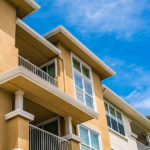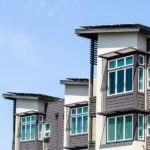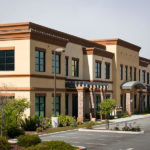Know About the Most Common Termites in California
In California, termite activity goes on all year. These destructive insects cause millions of dollars of damage each year and are active throughout the state. Why? It’s more than just the climate. California is home to several different species of termite, which allows them to swarm in any season. Let’s take a look at the common types of termites in California.
- The Western Drywood Termite lives in wood. They’ll eat just about any kind of wood, hard or soft, and they make their home in the wood they’re eating. Interestingly, they don’t require much moisture. Because they need so little water to survive, they can extract it from wood while they’re eating it. In southern California, Western Drywood Termites typically swarm during the day, between September and November. These swarmers are most active in warm weather, though, so you’re likely to see them between July and October in the northern parts of the state. Even if you don’t see the termites themselves, you can tell you have an infestation by their droppings. These pellets, known as “frass,” look like a sprinkling of wood-colored salt or pepper. You might also notice wood shavings near the infestation. This is one of the most common types of termites in California, and Western Drywood Termites are often found in lumber or decks, though they can infest any wood in your home, from furniture to the supporting beams of a house. Often, swarmers won’t leave the property when they swarm but will find a new place to infest in the same house.
- Subterranean Termites are also quite common in this state. Unlike drywood termites, Subterranean Termites require plenty of moisture to survive- about 70 percent. They live underground and are attracted to the moisture in, under, and around a house. They have smooth jaws, also known as mandibles, and prefer to eat soft wood, not just because it’s easier to eat but also because it has a higher moisture content than hard wood. As you might expect, these termites are typically active during the rainy season and usually release swarmers after a rain, once the sun comes out. They can swarm at any time of year, though, and have been known to swarm simply because a yard has been watered. If you’ve got a Subterranean Termite infestation, you’re likely to see mud tubes on the outside of your home, in your crawlspace, or even coming from cracks or joints in your concrete slab. These termites use mud tubes to travel because being exposed to the open air dries them out so that they can’t survive.
- Dampwood Termites are found up and down the west coast. Much larger than subterranean termites, Dampwood Termite swarmers can be up to about one inch long. Dampwood Termite soldiers have large, multi-toothed mandibles, and they can eat all kinds of wood, as long as it’s damp. They live in wood without coming into contact with the ground, and they don’t make mud tubes. Instead, they create a series of chambers, called galleries, throughout the wood, connected by tunnels with extremely smooth walls. As with drywood termite species, Dampwood Termites can leave frass outside their galleries. Because they need to maintain a high level of humidity in their homes, they often use this fecal matter to seal off their galleries. You’ll often find Dampwood Termites in felled timber or dead trees and stumps. If your home has plumbing leaks or problems with ventilation or drainage, the resulting moisture can make it vulnerable to Dampwood Termites. Worse, the presence of Dampwood Termites often indicates decaying wood within the structure of your home. These termites typically swarm just before sunset, during summer and early fall. Dampwood Termites are difficult to treat, so the best way to protect your home from them is to prevent them from infesting your home in the first place. To do this, it’s necessary to be vigilant about moisture problems in your home, fixing leaky pipes and other leaks, and keeping your gutters clean and dry. If you do suffer from a Dampwood Termite infestation, your only recourse is to repair the damage the termites have caused and take steps to protect your home in the future.
At MightyMite Termite Services, we’re experts in controlling all types of termites in California. We perform termite inspections to ensure that your home is free of termites and work hard to help you keep it that way, using treatments that are naturally derived and have a low impact on the environment. We diagnose and treat infestations with the most effective methods and unmatched warranties, solving your termite problems the first time with an industry-best “no call-back rate.” That, combined with our experience, technology, and highly trained professional staff, makes us the leading extermination company in the Bay Area. We understand that your home is your most important investment, so we work hard to provide excellent service, utilizing best practices to solve our customers’ termite problems in Northern California. For more information, call us today at 408.335.7053, email Info@mightymitetermite.com, or contact us through our website.







